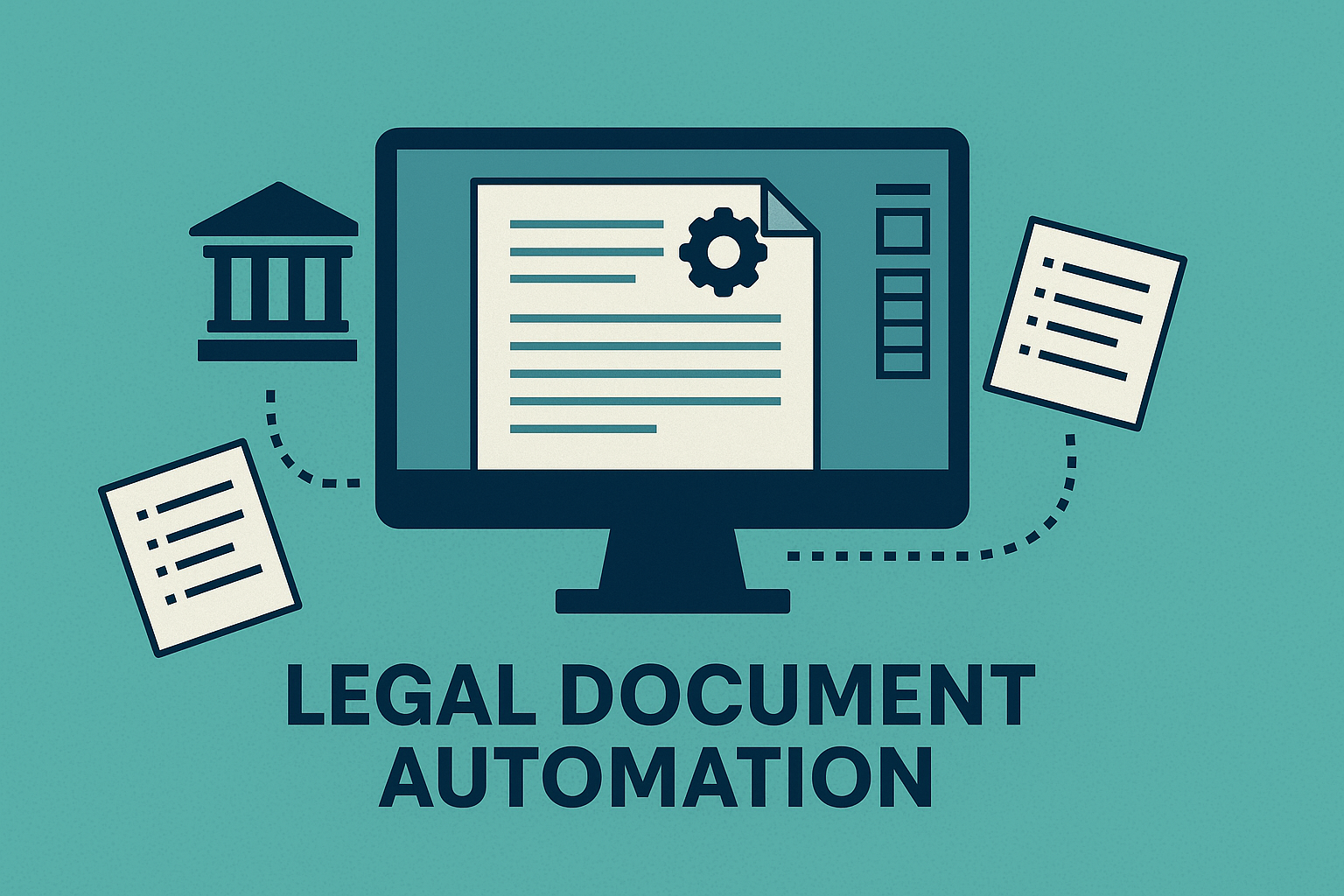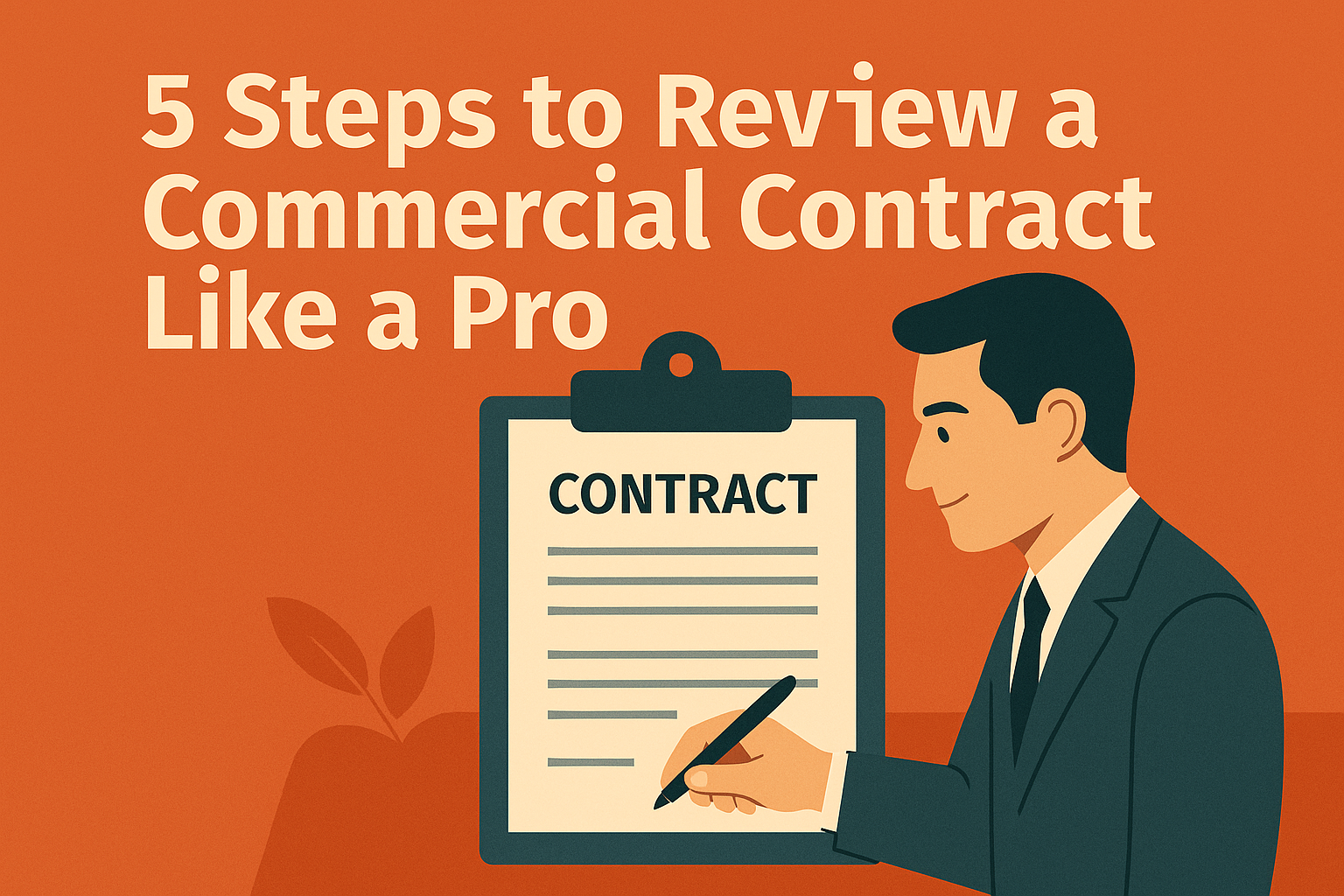
The Manual Maze
Every lawyer knows the maze.
You start with one draft…then another version arrives, and another. You compare, comment, clean up formatting, fix cross-references, double-check defined terms, and somehow still miss a stray comma or a clause that slipped through.
The problem isn’t that the work is too hard. It’s that there’s so much of it, and so little time to get it all done.
Every edit requires attention; every version demands review. Hours go into keeping documents clean and consistent — time that could be spent advising clients, negotiating deals, or solving actual legal problems.
That’s where legal document automation comes in.
For most people, the term conjures images of automatically generated forms or pre-filled templates. And that’s part of it, but it’s only the beginning. Document automation also includes the technology that streamlines review, comparison, and editing — the unseen parts of the process that consume most of a lawyer’s day.
When done right, automation doesn’t replace legal experience. It removes the friction that gets in its way.
It makes sure every cross-reference updates itself, every clause stays consistent, every change is tracked cleanly, and every version tells the truth about what changed, so you can focus on judgment, not housekeeping.
Because when you save time with effective document automation, you’re giving yourself more time to focus on your most important work.
What Legal Document Automation Actually Is (and Isn’t)
At its core, legal document automation is about turning the repetitive parts of drafting, reviewing, and managing legal documents into reliable, rule-based workflows.
That can take different forms. Some tools generate new documents automatically from questionnaires or templates — think NDAs, engagement letters, or routine vendor agreements. Others focus on what happens after the first draft: the back-and-forth review, the comparison, the small but critical edits that make the difference between a clean document and a costly oversight.
Automation can:
- Identify and reconcile differences between versions
- Keep cross-references and defined terms synchronized
- Flag missing clauses or inconsistent phrasing
- Standardize formatting automatically
- Reduce the human error that creeps in during manual edits
The goal isn’t to take lawyers out of the process entirely, but to remove the friction between expertise and execution. Good document automation doesn’t replace legal reasoning; it clears space for it.
And while many people think of automation as a big, disruptive change, the most effective versions live right where lawyers already work: inside Word, in the middle of the drafting process. That’s where time is won or lost, and where automation can quietly do its best work.
How It Works
Legal document automation doesn’t mean handing all of your drafting (and thinking) over to a robot. It means giving technology a checklist and letting it handle the steps that never really required human judgment in the first place.
Most automation tools fit into one of these three stages of document production: Input → Review → Output
- Input
It starts with the data you already have from templates, prior contracts, or structured fields such as party names, dates, and key terms. Some systems generate new documents automatically from those inputs. Others use them to populate variable fields or suggest clauses based on context.
- Review
This is where most lawyers spend their time, and where the biggest gains stand to happen from automation.
Automation tools in the review phase might instantly compare two versions, highlight material changes, and detect missing definitions or broken cross-references. They could reformat a document to match your organization’s style in seconds. And they might surface inconsistencies — for example, if one clause refers to “Agreement” and another to “Contract.”
- Output
The result of these structured input and automated review processes is a clean, consistent document that’s ready for approval and signature without days of manual correction.
When automation works well, it fades into the background. Lawyers stay in control, but the process feels lighter: formatting behaves, cross-references update, and version histories make sense. The focus shifts naturally from fixing documents to refining ideas.
Why It Matters
Legal work largely runs on documents, so many of the delays, frustrations, and risks in legal processes start there.
Every mismatched version, off-template clause, or broken cross-reference creates friction that lawyers have to fix by hand. Document automation matters because it clears that friction away.
For law firms, that means fewer bottlenecks in drafting and review. Routine work moves faster, deadlines stay on track, and documents stay consistent across teams and clients. Lawyers can spend more time thinking about the implications of a clause, not just its punctuation.
For in-house teams, the benefits are similar but felt differently. Automation helps contracts move through review cycles with fewer slowdowns, improves visibility into edits and risk, and lets legal departments focus on higher-impact priorities such as advising, negotiating, and supporting the business.
At every level, the impact is the same: cleaner work, clearer communication, and a little more breathing room in a profession that rarely offers it.
Common Misconceptions
Legal document automation often sounds more futuristic than it really is. Most of the technology is practical, accessible, and already part of everyday workflows, but a few persistent myths still get in the way of adoption.
“It replaces lawyers.”
Automation handles structure, not substance. It organizes text, flags inconsistencies, and applies rules, but it doesn’t interpret law or negotiate outcomes. The goal is to make the lawyer’s expertise more visible, not redundant.
“It’s only for large firms.”
Document automation used to require expensive systems and dedicated IT support. Now, many tools work out of the box, scaling easily for teams of any size, from solo practitioners to enterprise legal departments.
“It’s just for templates.”
Templates are only one part of the picture. Automation can assist throughout the document’s life, detecting changes, maintaining consistent definitions, and preventing small mistakes from multiplying across versions.
“It requires learning a new platform.”
Many modern solutions fit directly into the tools lawyers already use. The best automation feels invisible — it supports existing habits instead of replacing them.
Each of these misconceptions comes from the same source: the idea that technology must be disruptive to be useful. In practice, the most effective automation is quiet. It saves time, reduces risk, and lets lawyers stay focused on the work that really needs them.
How to Get Started
Like any process improvement, document automation works best when you start small and build momentum.
- Identify your repeatable documents.
Look for the types of documents that consume the most time but change the least: NDAs, engagement letters, vendor agreements, standard contract forms. These are your best candidates for automation.
- Map your bottlenecks.
Identify where your team’s time actually goes: drafting, formatting, version control, or approvals. The answer will point you to which steps need the most automation first.
- Standardize before you automate.
Templates, clause libraries, and consistent terminology make automation far more effective. Cleaning up structure on the front end pays off later in accuracy and control.
- Choose tools that complement existing workflows.
The best results come from systems that fit where your team already works, not from forcing a new platform or process. Whether you’re automating generation, review, or comparison, integration and usability matter as much as features.
- Keep the human in the loop.
Automation is most powerful when it supports judgment, not when it replaces it. Review outputs, refine templates, and use feedback to strengthen the system over time.
When done incrementally, document automation doesn’t feel like a technology overhaul. It feels like something more familiar: the gradual disappearance of friction.
Conclusion
Legal document automation isn’t a single tool or a one-time project. It’s an ongoing shift in how lawyers work — away from mechanical effort and toward deliberate focus.
The technology itself can be simple. What matters is how it’s used: to create consistency, to surface risk earlier, and to give legal teams room to think. When the routine work moves faster, the important work gets more attention.
Automation, at its best, is invisible. It keeps the process steady, the documents clean, and the people doing what only they can do: applying judgment, context, and care.
BoostDraft helps legal teams automate drafting and review directly within Word. Book a demo to see how it works.

